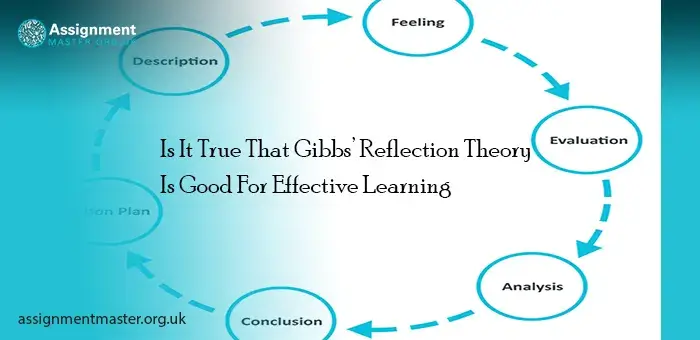Introduction
Understanding and proficiency with the Gibbs Reflective Cycle is essential to becoming an influential leader. With the help of this effective technique, leaders may use reflective practice to grow personally and professionally. It helps them turn experiences into important lessons and future results.
This Article Will Teach you About
The six critical Gibbs Reflective Cycle stages and their importance.
Gibbs model applications in real-world contexts and scenarios.
How to incorporate reflective practice for ongoing development into your leadership approach.
The Gibbs Reflective Cycle: What Is It?
We like Gibbs’ Reflective Cycle because it is a useful tool that enables professionals and leaders to transform their experiences into insights that can be implemented. It is not merely a theoretical model.
The reflective cycle was created by Professor Graham Gibbs. The concept consists of six steps that you can utilize to lead yourself through an organized reflection process.
You will develop your leadership abilities, decision-making skills, and emotional intelligence by actively participating in each step. Which includes Description, Feelings, Assessment, Analysis, Conclusion, and Action Plan.
This cycle offers a thorough framework for self-improvement and both personal and professional progress by encouraging a review of events and a critical study of emotions and reactions.
Adopt Gibbs’ Reflective Cycle to hone your leadership style, gain knowledge from your experiences, and encourage a culture of ongoing development among your team members. All this information I get to know from the content prepared by Assignment Helpers London.
Professor Graham Gibbs: The Reflective Cycle’s Mental Foundation
The renowned American psychologist and sociologist Professor Graham Gibbs. Which is well-known for having had a big impact on assessment, learning strategies, as well as some important instruction.
His groundbreaking book “Learning by Doing: A Guide to Teaching and Learning Methods,” published in 1988. Which has revolutionized educational teaching strategies. Gibbs’ theory of reflection in this work emphasizes how important active exploration and first-hand experience are to learning.
In cooperation with Bob Farmer and Diana Eastcott, Gibbs emphasized the significance of reflection in the process of learning. With that, he presents the reflective cycle, a novel instrument that can improve comprehension and augment the development of skills via self-examination.
Accepting this approach and all six stages can be revolutionary, empowering leaders and learners alike.
Which six phases make up Gibbs’ reflecting cycle?
The Gibbs cycle has the following stages:
Synopsis
Emotions
Assessment
Examination
In summary
Plan of action
Stages of the Gibbs Reflective Model: Detailed
Now let’s examine each step of the reflective model and examine some real-world applications of the Gibbs model of reflection.
Setting the stage for thoughtful thinking occurs during the Description stage of Gibbs’ Reflective Cycle. It entails recounting the events precisely as they happened, free of any interpretations or sentimental reactions.
1. What You Should Do Is As Follows
Context: Give the location and time of the event. Was it in the course of a project, a meeting, or a casual conversation?
Participants
Enumerate those who took part. Think about all the people who contributed, no matter how little.
Goal
Consider the motivation behind the incident. What was the objective or goal at that point?
Conclusion
Summarize the situation’s outcome. What was the outcome in the end?
Recall that throughout this phase of reflection, your main goal should be to present an impartial, factual account of the incident that is devoid of any emotional or subjective prejudice.
2. Sensations: Explore Your Emotional Reaction
You’ll examine the emotional side of your experience at this point, which will need some introspection and self-awareness. Here are the points to consider:
First Feelings
Take a moment to reflect on the actual incident. Which feelings were you feeling at the time? Recall your initial instinctive response.
Feelings After the Event
What changes did you notice in your emotions? Think back on any shifts in your emotions throughout time.
Effect on Other Parties
Now try to imagine yourself in other people’s situations. What emotions might they have had? Keep track of any responses or comments you encounter.
3. Evaluation: An Unbiased Appraisal of the Circumstances
This phase is all about assessing the experience with objectivity. Let’s dissect it:
Consider the event’s benefits and drawbacks. Which aspects were successful and which weren’t? Strive to render your evaluation as objective as you can.
Entire Experience
Think about the entire experience. Was it largely favorable or unfavorable, and if so, why?
Your Position
Consider carefully what you have done. How did your actions affect the situation’s challenges as well as its successes?
4. Analysis: Examining the Experience in More Detail
It’s time to give the incident a closer examination now. Pay attention to comprehending the “why” and “how”:
Reasons for Results
Consider the reasons behind the results that you received. What causes contributed to the favorable or unfavorable results?
Theoretical Relationships
Can you connect any models or ideas to what you’ve experienced? This may help you a clearer understanding of your choices and the effects they have.
Alternative Hypotheses
Consider the various steps you could have taken. In what ways would these have affected the result?
5. Concluding Remarks
Accruing Knowledge from Your Experience
However, at this point, the entire procedure will teach you important lessons. Your conclusion will assist you in synthesizing the lessons you’ve learned from the experience and creating plans of action for similar circumstances in the future.
How to Approach Your Conclusion Is As Follows
Important Takeaways
Consider the lessons you have taken away from this encounter. What new perspectives have you received on the circumstance, other people, or yourself?
Potential Enhancements
Consider the things that might have been done differently. Determine any squandered chances or potential avenues for personal development.
Future Skills
Think about what abilities or information you could need to deal with comparable circumstances in the future.
 +44 161 381
0000
+44 161 381
0000 info@assignmentmaster.org.uk
info@assignmentmaster.org.uk

